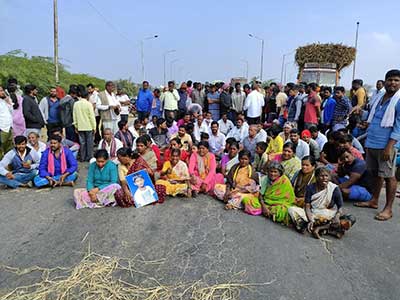Date: 22/02/2023
Relevance: GS-3: Biodiversity protection and related laws; Man-Animal Conflict; Animal Welfare.
Key Phrases: Human-Animal Conflicts, Nagarhole National Park, Animal Welfare Board, Prevention of Cruelty to Animals Act, 1960, Loss of Life, Crop Damage, Leopard Census.
Context:
- Karnataka has been grappling with an increase in man-animal
conflicts, which have brought wildlife and forest conservation issues to
the fore and led to questions about the State’s response to them.
- Earlier this month, a 70-year-old man belonging to the Jenu Kuruba community and his 12-year-old grandson were killed in tiger attacks on the boundary of the Nagarahole National Park near Kutta in Kodagu district.
- Four human deaths took place in human-leopard conflicts in south Karnataka over a span of a few months.
Key Highlights:
- As per the study carried by conservation biologist Sanjay Gubbi and his
team, the leopard population in the Karnataka state is around 2,500.
- More than 50% of the human-leopard conflict takes place in five districts- Ramanagara, Tumakuru, Mandya, Mysore and Hassan.
Human-Animal Conflict:
- Human-wildlife conflict is when encounters between humans and wildlife lead to negative results, such as loss of property, livelihoods, and even life.
Reason of rising conflicts:
- As human populations and demand for space continue to grow, people and wildlife are increasingly interacting and competing for resources, which can lead to increased human-wildlife conflict.
- When the wildlife population was increasing due to protection
measures, the area under forest cover should have been expanded by
creating buffer zones.
- But the converse happened in Karnataka.
- Forests have either shrunk or been disturbed with the government
clearing infrastructure projects by diverting forest land for
non-forestry purposes.
- Between 2020-21 and 2021-22, when human-animal conflict reached a new high, more than 450 hectares of forest land were diverted for as many as 39 projects including mining, road construction, irrigation, windmills and railway lines.
- The total land area under forest cover in 2012-13 was
43,356.47 sq km, or 22.61% of the State’s land area.
- This has declined to 4,0591.97 sq km, or 21.16% of the land area, in 2021-22.
- The state government has also opposed the Union Environment Ministry’s notification on Ecologically Sensitive Areas in the Western Ghats that could help protect green cover.
Consequences of conflict:
- Defensive and retaliatory killing may eventually drive these species to extinction.
- These encounters not only result in suffering for both people and wildlife immediately impacted by the conflict; they can also have a global reach, with groups such as sustainable development agencies and businesses feeling its residual effects.
- According to the Forest Department, during 2020-21, there were
24,740 cases related to crop damage by wild animals; 3,019 cases
of cattle kill; and 36 human deaths in the State.
- The compensation paid in all the cases put together was ₹21.64 crore.
- In 2021-22, cases of crop damage caused by wild animals increased
to 31,225; the number of cattle killed went up to 4,052; and 40 human deaths
were reported.
- The compensation paid exceeded ₹27.4 crore.
- In the current year, over ₹20 crore has already been paid by way of compensation. And once the pending applications are processed, this figure is expected to cross ₹40 crore.
- The cost of the conflict, both in terms of deaths and crop damage, is
being borne by the people living on the forest fringes and in villages.
- This means there could be less local support for wildlife conservation.
- If not effectively managed, human-wildlife conflict has the potential to negatively affect these activities and conservation much more broadly.
Steps taken by Government:
- The government authorities of the state have thought of mitigatory
plans to reduce conflicts.
- These include fencing villages abutting forest boundaries with discarded rail fences, and relocating elephants and tigers from conflict zones.
- To address Human-Leopard conflicts, the Forest Department is now toying
with the idea of creating two or three separate enclosures or rescue
centres.
- Each of these will have the capacity to house 250 leopards that have
been tranquillised and captured in conflict zones.
- Nearly 130 leopards have been captured from conflict zones in Karnataka between April 2022 and January this year alone.
- Each of these will have the capacity to house 250 leopards that have
been tranquillised and captured in conflict zones.
Way Forward:
- Though mitigatory initiatives are imperative, some believe that they only address the symptoms and not the cause.
- This is because the increase in conflicts and the rise in human
deaths are perceived to be a direct fallout of the government’s
conservation measures on the one hand and development policies on the other,
which are at odds with each other.
- As a consequence, the environment gets short shrift.
- The area under forest cover should be expanded by creating buffer
zones.
- Such areas can act as sinks to absorb the rise in animal population and provide connectivity for animal migration.
- Procuring plantations and land abutting forest areas can augment and strengthen the buffer zone and help reduce conflicts.
- If such forest land conversion policies, which are detrimental to the environment, are not reversed, the impact of mitigation measures to reduce conflicts will be neutralised and human-animal conflicts will only escalate in the future.
- In order to reduce human-wildlife conflict, we must reassess the relationship—and especially the direct interactions—between people and wildlife to improve our coexistence in the future.
Conclusion:
- There is a need to adopt approaches that identify and address the deeper, underlying causes of conflict while developing systemic, context-specific solutions with affected communities as active and equal participants in the process.
Source: The Hindu
Mains Question:
Q. What are the major reasons and consequences of the rising human-animal conflicts? Also, suggest some progressive measures to address these issues. (250 Words).








